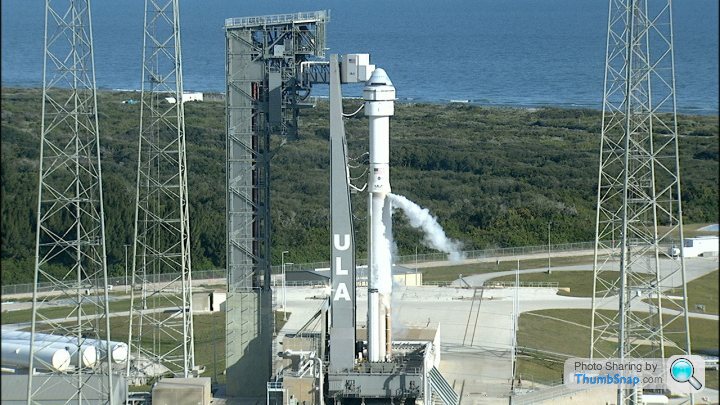Boeing Starliner
Discussion
That's quite a thought.
Here's a history of the Atlas family from its first (failed) flight in 1957.
https://www.youtube.com/watch?v=TeGmIeu0xvI
Here's a history of the Atlas family from its first (failed) flight in 1957.
https://www.youtube.com/watch?v=TeGmIeu0xvI
ULA have rolled out the Atlas V and Starliner capsule for their ISS launch, targeted for December 19th.
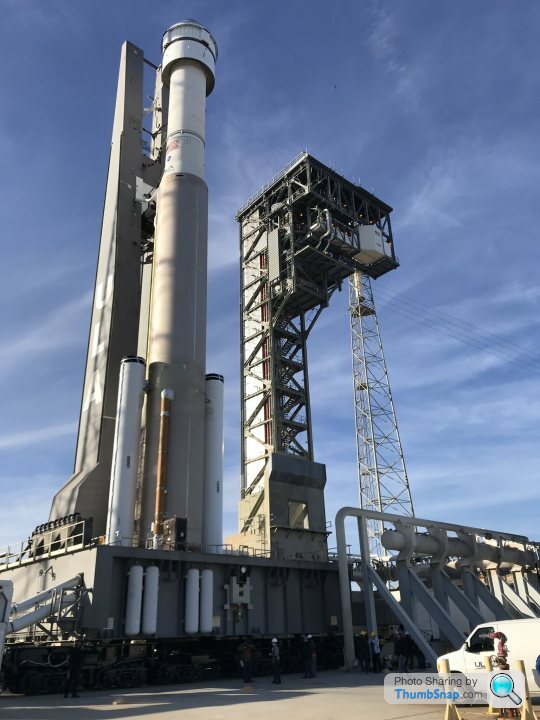
The crew access arm can be seen folded back against the service tower.
They'll shortly be doing a "wet dress rehearsal" to practice & test filling it with fuel and liquid oxygen. The side boosters are missing their nose caps currently.
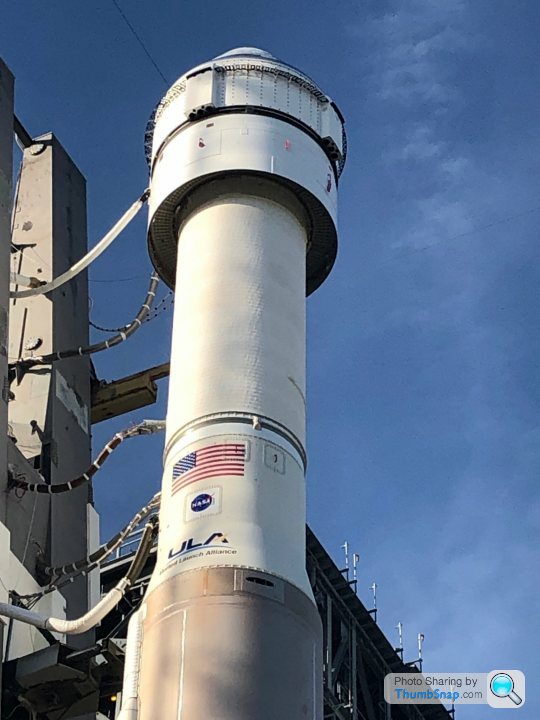
What looks like a fence running around to top is apparently designed to move the shockwave further down the rocket.

The crew access arm can be seen folded back against the service tower.
They'll shortly be doing a "wet dress rehearsal" to practice & test filling it with fuel and liquid oxygen. The side boosters are missing their nose caps currently.

What looks like a fence running around to top is apparently designed to move the shockwave further down the rocket.
The "aeroskirt" has to be open at the bottom to allow the capsule's abort rockets to vent downwards through it.
https://youtu.be/1NLQ4bO-f58?t=1463
They couldn't really mount them centrally, as they'd likely obliterate the big liquid hydrogen tank below it.
SpaceX angle their Dragon 2 abort rockets out the side for the same reason.
https://youtu.be/1NLQ4bO-f58?t=1463
They couldn't really mount them centrally, as they'd likely obliterate the big liquid hydrogen tank below it.
SpaceX angle their Dragon 2 abort rockets out the side for the same reason.
Edited by Beati Dogu on Thursday 5th December 20:36
Beati Dogu said:
That's right. Provided it works, obviously. The in flight abort was optional, and ULA chose not to do one.
SpaceX will do their in flight abort no earlier than January 4th now. It'll be televised / streamed live.
As I mentioned in my other post slightly I am not sure I like a competitive race to get two USA capsules to the ISS. This is not the 60s.SpaceX will do their in flight abort no earlier than January 4th now. It'll be televised / streamed live.
The goal is to be cheap and USA based v Soyuz, not the first.
Maybe being old i worry too much

Eric Mc said:
There were no US competing space capsules in the 1960s. The competition for individual projects was done at the design and specification stage. Only the design selected got built. That's why you had Mercury (McDonnell), Gemini (McDonnell) and Apollo (North American) in sequence.
Although there was the "Big Gemini" versus Apollo battle, which I think got to mockup stage?Flooble said:
Although there was the "Big Gemini" versus Apollo battle, which I think got to mockup stage?
Apollo was actually decided on BEFORE Gemini. Apollo was initially looked on as the follow on project to Mercury and requests for proposals were put out to industry in 1959 for Mercury's successor. Gemini only came about in 1962 AFTER North American had already been awarded the contract for the Apollo spacecraft. Once Lunar Orbit Rendezvous was decided on as the method to get Apollo to the moon, NASA realised that the techniques required to achieve this were too big a jump from Mercury - and so an interim programme was needed. And that is where Gemini comes in.Early iterations of the Apollo design lacked docking capability, as at the time it was expected the direct ascent mission mode would be used for Lunar missions. At one point it was even envisaged as being a 2 seater
http://www.astronautix.com/a/apolloa.html
http://www.astronautix.com/a/apolloa.html
Edited by MartG on Sunday 8th December 00:28
MartG said:
Early iterations of the Apollo design lacked docking capability, as at the time it was expected the direct ascent mission mode would be used for Lunar missions. At one point it was even envisaged as being a 2 seater
http://www.astronautix.com/a/apolloa.html
Indeed. The requirement to be able to rendezvous and dock made a complete redesign of the original concept pretty much imperative. That is the real reason why North American ended up with a Block 1 and Block 2 Apollo design. The rendezvous and docking capability was incorporated into the Block 2.http://www.astronautix.com/a/apolloa.html
Edited by MartG on Sunday 8th December 00:28
Here's picture of a model I built depicting what the Block I looked like. Note the lack of docking probe.

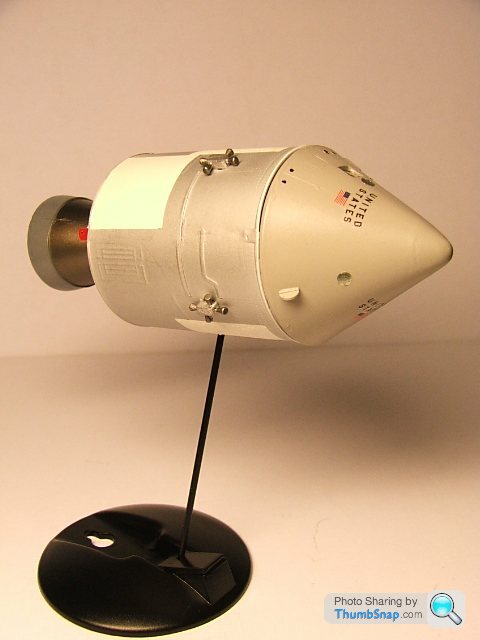
The Atlas V / Starliner test flight to the ISS has passed its final test - the Launch Readiness Review.
So it's all set for launch on Friday 20th at 11.36 am UK time (6:36 a.m. EST). The weather forecast is favourable.
This is its launch profile:
https://www.youtube.com/watch?v=oYACbP8eH38
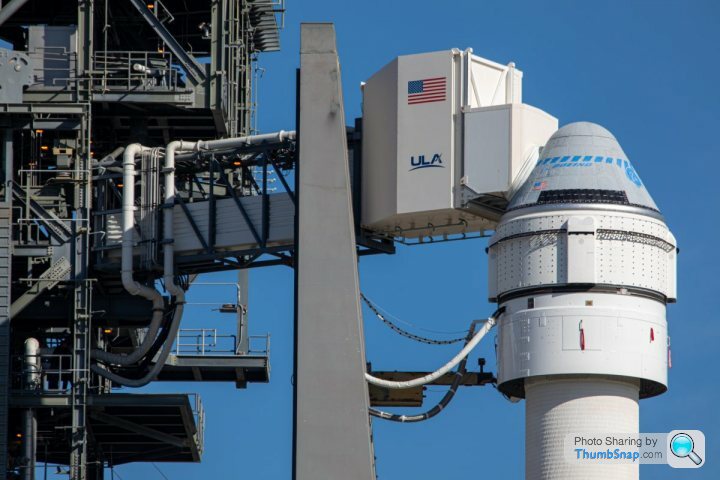
So it's all set for launch on Friday 20th at 11.36 am UK time (6:36 a.m. EST). The weather forecast is favourable.
This is its launch profile:
https://www.youtube.com/watch?v=oYACbP8eH38

Interesting video. I hadn't realised that the booster only placed the spaceship on a sub-orbital trajectory and that it would be the engines on the Starliner itself that would place the capsule into "proper" orbit. That's similar to the technique used by the Space Shuttle.
The Space Shuttles Solid Rocket Boosters and Main Engines placed the Orbiter in a sub-orbital trajectory and then the Orbiter used its Orbital Manoeuvering System engines to achieve a genuine orbit.
The Space Shuttles Solid Rocket Boosters and Main Engines placed the Orbiter in a sub-orbital trajectory and then the Orbiter used its Orbital Manoeuvering System engines to achieve a genuine orbit.
Gassing Station | Science! | Top of Page | What's New | My Stuff




